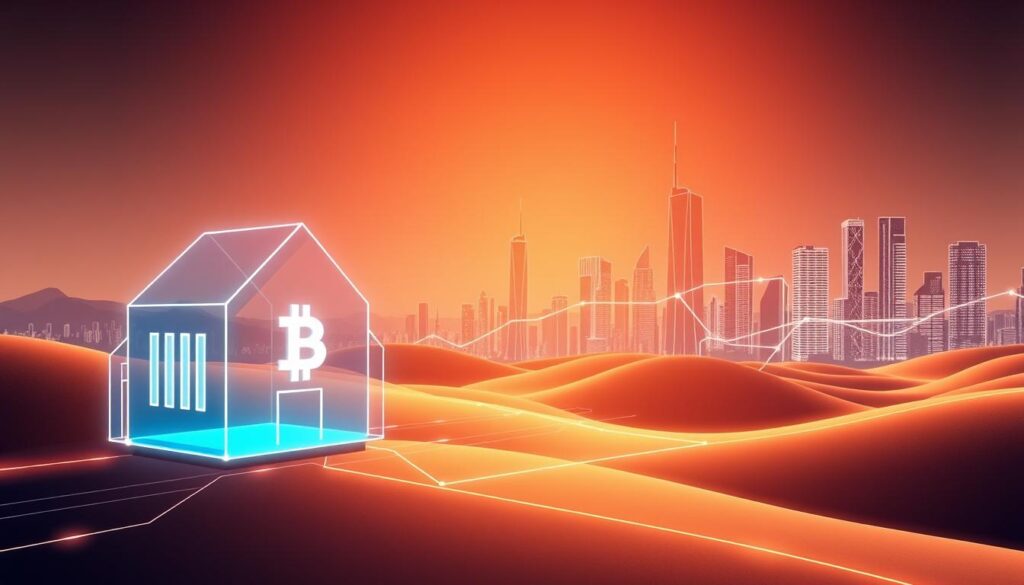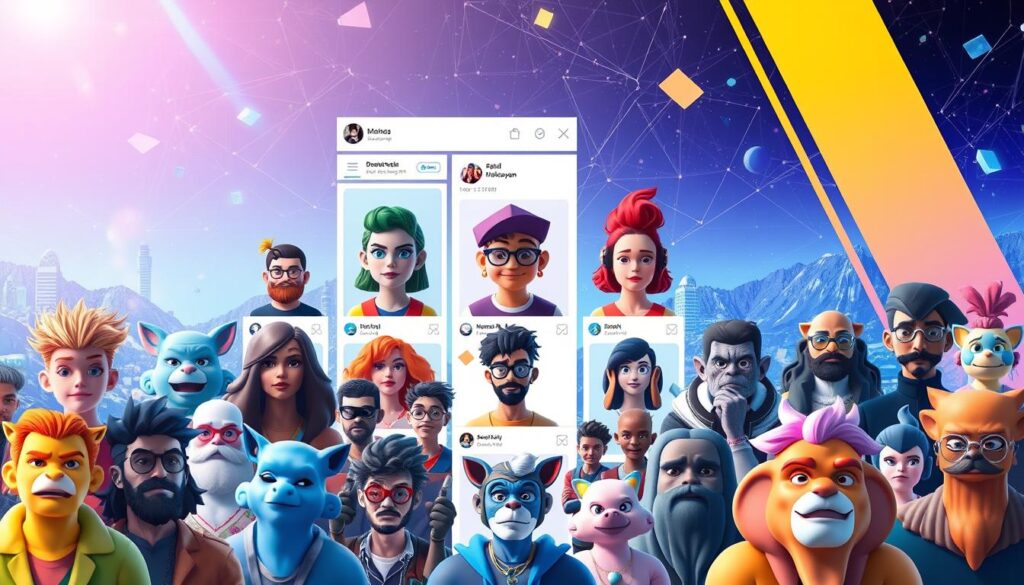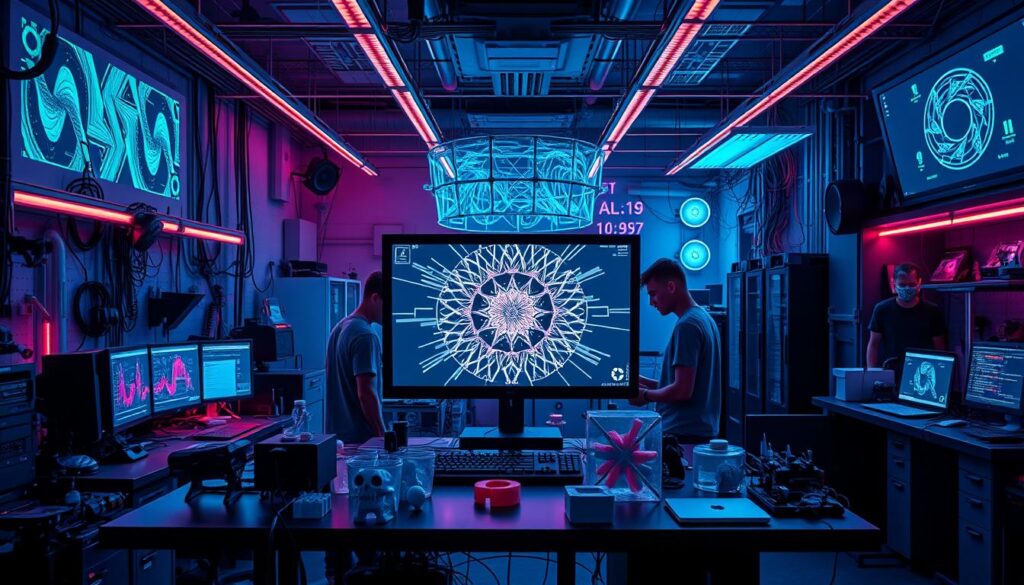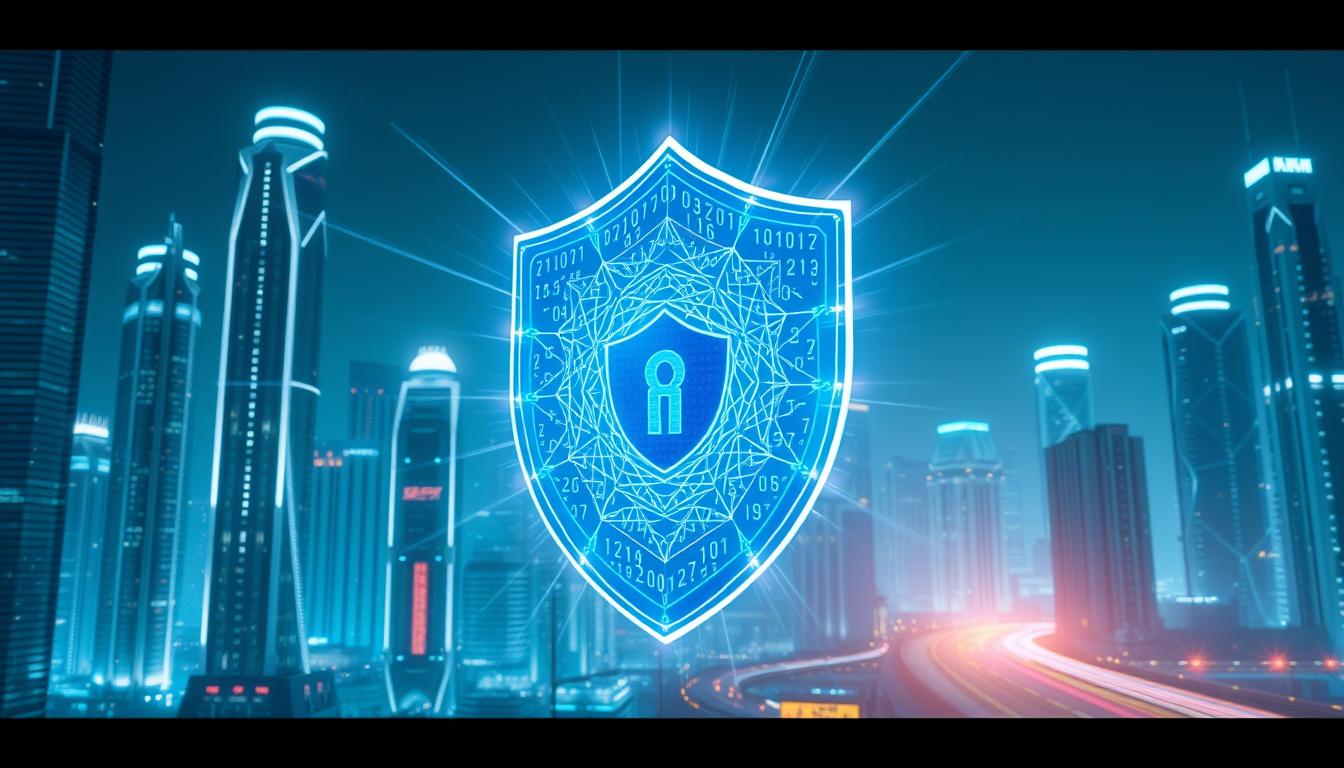Now Reading: NFT Real Estate Virtual Property: A Guide to Digital Ownership
- 01
NFT Real Estate Virtual Property: A Guide to Digital Ownership
NFT Real Estate Virtual Property: A Guide to Digital Ownership

The digital landscape is transforming how we think about assets and ownership. A new frontier has emerged where blockchain technology meets immersive online environments. This convergence creates unique opportunities for digital possession.
The global metaverse market was valued at $63.83 billion in 2021. Experts project an annual growth rate of 47.6% through 2029. This rapid expansion signals a fundamental shift in how people interact with digital spaces.
These digital assets serve multiple practical purposes beyond mere speculation. They function as spaces for socialising, gaming environments, and professional workspaces. The value of each parcel depends on factors like demand, project quality, and utility.
Blockchain technology ensures verifiable ownership and scarcity in these digital realms. This represents a new paradigm where online holdings carry genuine monetary worth. The market continues to evolve with unprecedented momentum.
Key Takeaways
- The metaverse market demonstrates significant growth potential with a 47.6% annual expansion rate
- Digital parcels serve functional purposes including social spaces and work environments
- Blockchain technology provides secure and verifiable ownership records
- Asset value depends on demand, project quality, and practical utility
- This represents a fundamental shift in how we perceive digital possession
- The market combines technological innovation with practical applications
Understanding the Metaverse and Virtual Worlds
Shared persistent spaces accessible through various devices represent the next internet evolution. This concept, first imagined in Neal Stephenson’s 1992 novel Snow Crash, has transformed from science fiction to tangible digital environments.
What is the Metaverse?
The metaverse comprises interconnected 3D worlds hosted online. These digital realms blend virtual and augmented reality technologies. People access them through smartphones, computers, and specialised headsets.
Multiple platforms exist, each with unique rules and communities. Users should research each digital world’s characteristics before engaging. The table below shows key differences between major metaverse environments.
| Platform | Primary Focus | Access Devices | User Base |
|---|---|---|---|
| Decentraland | Social & Commerce | PC, VR Headsets | 500k+ Monthly |
| Sandbox | Gaming & Creation | PC, Mobile | 1M+ Active |
| Somnium Space | VR Immersion | VR Headsets | 200k+ Users |
| Cryptovoxels | Art & Exhibitions | PC, Web | 150k+ Visitors |
Exploring Virtual Real Estate
Digital properties range from simple 2D spaces to complex 3D structures. Their value depends on location, design quality, and functional utility. Each parcel offers different development opportunities.
These spaces facilitate social connections through avatar interactions. They support activities like gaming, learning, and virtual land ownership. The immersive experience creates meaningful digital engagements for people worldwide.
NFT Real Estate Virtual Property Defined
Digital ownership finds its foundation in cryptographic tokens that guarantee uniqueness and authenticity. These innovative systems represent holdings in online spaces through non-fungible tokens. The technology creates a new paradigm for establishing rights in digital environments.
Digital Deeds and Blockchain Technology
Non-fungible tokens function as digital deeds that provide cryptographic proof of possession. They operate similarly to traditional property titles but use blockchain records instead of government systems. This approach ensures each holding remains unique and verifiable.
The term “non-fungible” means these tokens cannot be copied or substituted. Each represents a distinct digital asset with individual characteristics. This differs from interchangeable cryptocurrencies where units hold equal value.

Blockchain technology creates permanent records of ownership and transaction history. This transparency eliminates disputes over rights in online worlds. Developers and users create these spaces then sell or lease them for various purposes.
Acquiring digital holdings means obtaining unique blockchain code that serves as an irrefutable deed. These digital deeds enable direct peer-to-peer transactions without traditional intermediaries. The process reduces costs and increases transaction speed significantly.
Use Cases and Market Opportunities
Modern digital spaces offer multifaceted opportunities that bridge entertainment with real-world utility. These environments serve practical functions beyond their initial gaming origins.

Gaming, Socialising and Commerce
Digital properties host immersive gaming experiences where players can showcase creativity. They function as social hubs for global communities to connect and share content.
Commercial applications include virtual storefronts and advertising spaces. Businesses reach engaged audiences through these innovative channels. The market opportunities continue expanding as platforms mature.
Entertainment venues host concerts and events with digital ticket sales. These spaces create new revenue streams within growing digital economies.
Education and Real-World Applications
Educational institutions use digital classrooms for interactive learning. Museums and galleries offer immersive exhibitions in these environments.
Professional fields benefit from training simulations for hazardous situations. Architects test designs before physical construction begins.
The value of these digital assets grows with user adoption and platform development. Strategic investments can capitalise on this emerging market’s potential.
How to Purchase and Manage Virtual Property
Purchasing digital spaces involves a systematic approach from marketplace selection to final ownership confirmation. This process requires careful planning and research to ensure successful acquisition.

Finding a Trusted Marketplace
Begin your journey by selecting reputable platforms like Decentraland, Somnium Space, and The Sandbox. These specialised marketplaces facilitate transactions using various cryptocurrencies.
Research each platform’s reputation thoroughly before engaging. Check user reviews and security features to protect your investment. This due diligence helps avoid potential scams.
Steps to Secure and Develop Your Asset
The acquisition process follows several key stages. First, browse available land and plots using search filters for location, size, and price. Average costs range from $6,000 to $100,000.
Next, research each property’s history including previous sales and development plans. Most marketplaces use auction systems requiring competitive bidding.
Complete the transaction by transferring cryptocurrency to the seller’s wallet. You’ll receive digital proof of ownership in return. Secure your asset properly after purchase.
Once acquired, you can develop your holding with buildings, decorations, or functional features. These spaces serve various purposes from social gatherings to commercial activities.
Strategic purchases can yield significant returns. One investor saw their $15,000 digital islands appreciate to $100,000 within a year.
Technology Behind Virtual Real Estate: Blockchain and NFTs
Cryptographic innovations have transformed how people establish rights and manage holdings in three-dimensional digital spaces. Distributed ledger systems create immutable records that guarantee authenticity and prevent duplication.
This technology streamlines procedures by eliminating intermediaries. Transactions that once took weeks now complete in minutes through automated verification processes.
The Role of Smart Contracts
Self-executing agreements revolutionise traditional management systems. These digital contracts automatically enforce terms when predetermined conditions are met.
Rent payments, maintenance schedules, and ownership transfers occur without manual intervention. This automation reduces costs and increases operational efficiency significantly.
| Process | Traditional System | Blockchain Solution | Time Saved |
|---|---|---|---|
| Ownership Transfer | 30-45 days | 5-10 minutes | 99% reduction |
| Payment Processing | 3-7 business days | Instant | 100% improvement |
| Contract Enforcement | Manual monitoring | Automatic execution | Continuous operation |
| Dispute Resolution | Legal proceedings | Immutable records | Preventive approach |

Ensuring Security with Digital Wallets
Protecting digital investments requires robust security measures. Hardware wallets and two-factor authentication provide essential protection layers.
Users must recognise sophisticated scams that target valuable holdings. Proper security protocols prevent unauthorised access and potential asset loss.
Location desirability and platform interoperability drive valuation in digital environments. Scarcity programming and user demand create market dynamics similar to physical markets.
Fractional ownership opportunities increase accessibility while maintaining security through cryptographic verification.
Conclusion
The investment landscape for digital holdings presents both exciting opportunities and significant uncertainties. While some plots command prices rivalling physical homes, this market remains speculative with no guarantees of appreciation.
High risk, high reward accurately describes this emerging sector. Early adopters have seen substantial gains, but investors should only commit funds they can afford to lose. Long-term holding strategies often yield better results than short-term speculation.
Celebrity involvement from figures like Paris Hilton demonstrates growing mainstream acceptance. As digital property markets evolve, limited land availability creates urgency for interested participants.
Thorough research and understanding monetisation strategies remain essential before entering this space. The metaverse offers limitless potential, but informed decisions aligned with personal financial goals are crucial for success.
FAQ
What exactly is a digital asset in the context of the metaverse?
In the metaverse, a digital asset is anything you can own that exists online. This includes plots of land, buildings, and even unique items for your avatar. These assets are secured using blockchain technology, which acts like a public ledger to prove who owns what.
How does owning a piece of land in a virtual world work?
Ownership of virtual land is recorded on a blockchain. When you buy a plot, you receive a unique token, often called an NFT. This token is your digital deed. It proves you are the sole owner and is stored securely in your digital wallet.
Can I make money from my digital real estate assets?
Yes, there are several ways to generate value. You can develop your land by building shops or hosting events and charge users entry fees. Alternatively, you can hold the asset and sell it later if its market price increases, similar to traditional investments.
What is the difference between augmented reality and the metaverse?
Augmented reality (AR) overlays digital information onto the real world you see through a device, like a phone. The metaverse is a fully immersive, persistent virtual world where users interact with each other and their surroundings through avatars.
How do I safely complete a transaction to purchase virtual property?
Safety begins with using a trusted marketplace. You will need a digital wallet and cryptocurrency to buy the asset. The transaction is processed via a smart contract on the blockchain, which automatically transfers ownership once payment is confirmed, ensuring a secure exchange.
Are there any real-world benefits to owning spaces in the metaverse?
Absolutely. Beyond social and gaming uses, companies are using these spaces for training, product launches, and remote collaboration. It offers a new platform for education and commerce that can reach a global audience without physical location limits.















